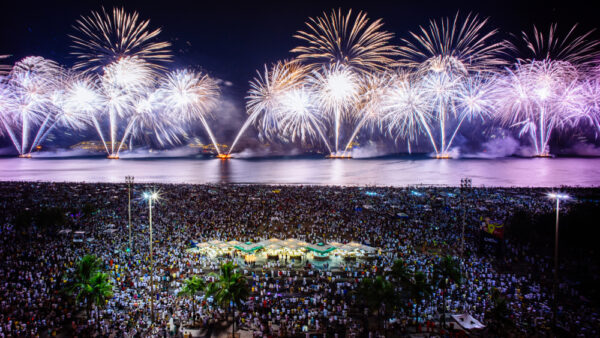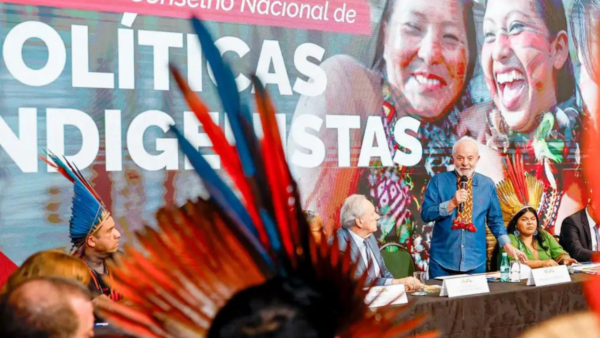Simmering tensions under the surface, an increasingly authoritarian leadership, and swelling military power cast a shadow over Brazil starting from the mid-1960s. Over the course of the country’s 21-year dictatorship, at least 191 civilian deaths and 234 “disappearances” occurred by the hands of those in power. But the Inter-American Court for Human Rights believes the real number of deaths, many of which went unreported, is actually closer to 1,000 – in addition to the estimated 10,000 Brazilians forced into exile and the more than 50,000 detainees.
Brazil had a high turnover when it came to presidents in the years directly following Vargas’s death. Juscelino Kubitschek oversaw the creation of Brazil’s new political heart, Brasília, and amped the country’s production capacity. But the military’s growing influence on the country’s leadership became evident when his successor, Jânio Quadros, stepped down after a mere seven months in office.
Fears over Brazil’s apparent communist leanings meant that Quadros’ vice-president, João Goulart, held on to the presidency for less than three years.
By April 1st, 1964, with the support of U.S. President Lyndon Johnson and several sectors of Brazil’s economic elites, the Armed Forces overthrew Goulart and installed a military dictatorship.
The military presidents
Just ten days later, Brazil had a new President to see out what remained of Goulart’s term: Field Marshal Humberto de Alencar Castelo Branco. Congress was shut down, strikes were made illegal, and salaries were frozen. Castelo Branco initially planned to hand power back to civilians by the end of his term, but the radical sectors of the military had other ideas. They imposed Field Marshal Artur da Costa e Silva as the new President, who governed between 1967 and 1969.
By that time, left-wing sectors had organized themselves into armed groups, using urban guerrilla tactics to fight against the military regime. In response, the government radicalized its repressive actions, suspending the constitution and imposing censorship. In 1969, Costa e Silva died of a heart attack and was succeeded by a military junta. One year later, General Emílio Garrastazú Médici became Brazil’s President.

Although Brazil’s dictatorship doesn’t compare to Chile or Argentina in terms of the number of deaths, the most violent human rights abuses took place under Médici. Rather than committing mass murders, Brazil’s dictatorship became renowned for its widespread use of torture techniques, learned at the U.S. Army School of the Americas in Panama. By the end of his term in 1974, left-wing armed organizations had been wiped out of the political landscape.
The “Years of Lead” coincided with a period of intense artistic revolution and creativity in Brazil, spawning movements like the pop genre tropicália, one of the most original cultural movements in our country. In an original, even anarchic way, musicians blended rock and roll with elements of Brazilian culture – which, at the time, was thought to be “uncool.”
Musicians Gilberto Gil and Caetano Veloso were imprisoned, while others like Chico Buarque undertook a self-imposed exile to European countries. It was also during this era that Brazil’s powerful drug trafficking gangs formed in prisons and established power in the country’s vulnerable, low-income favela communities.
The “Brazilian Miracle”
Between 1968 and 1973, Brazil experienced extraordinary growth rates, hovering at 10 percent every year. Official slogans were along the lines of, “No one can hold this country back.” But those positive numbers are deceptive upon closer inspection. That period also marked an increase of inequality in Brazil, and there was no solid growth-to-growth. When the oil crisis of 1974 shpook the world, Brazil’s economy plummeted. Trade deficits hit $4 billion per year.
To finance the earlier growth, the Brazilian government borrowed hefty sums of money from abroad. The external debt skyrocketed to $90 billion, and inflation annually hit the 100 percent mark. The poor became poorer, unemployment rose, and the internal market shrank abruptly.
The decline of the regime
In June 1973, Médici announced Ernesto Geisel would be his successor, taking control during the following March. Geisel’s leadership was the beginning of the regime’s softening, permitting a return of exiled citizens, allowing the Brazilian Democratic Movement (MDB) to run an election campaign in 1974 and relaxing authoritarian rule. In 1978, Brazilian workers gained an 11 percent wage rise after Geisel was forced to deal with the country’s first workers’ strike since before the dictatorship, led by none other than the future president Luiz Inacio Lula da Silva.
The dictatorship’s intentional softening continued under President João Figueiredo until 1984, when mass protests erupted throughout the country. With the cry of “Diretas Já” (direct elections now), protestors demanded direct elections for the population. Although they were unsuccessful, Brazil’s indirect elections in 1985 signaled an official end to the dictatorship.










 Search
Search






































